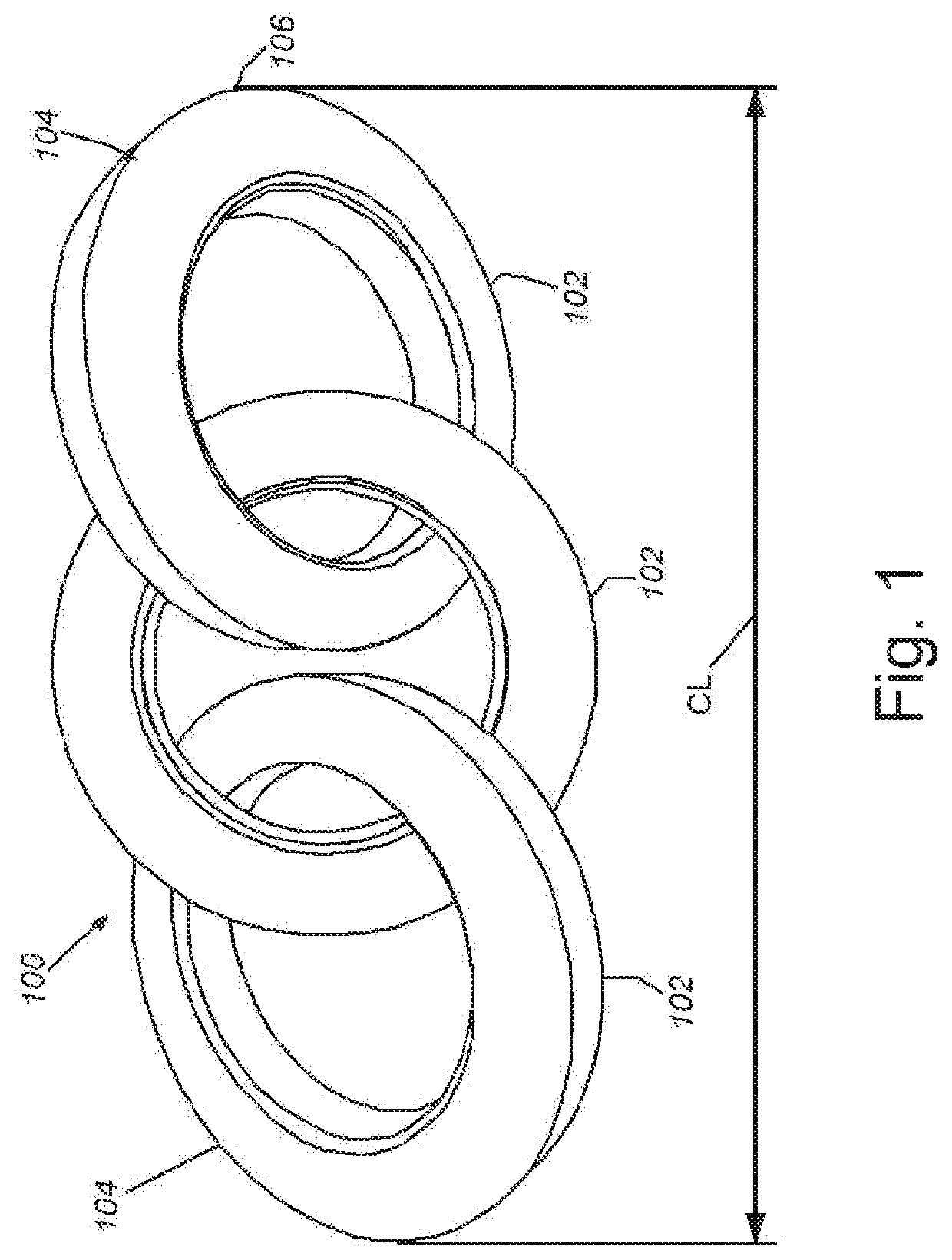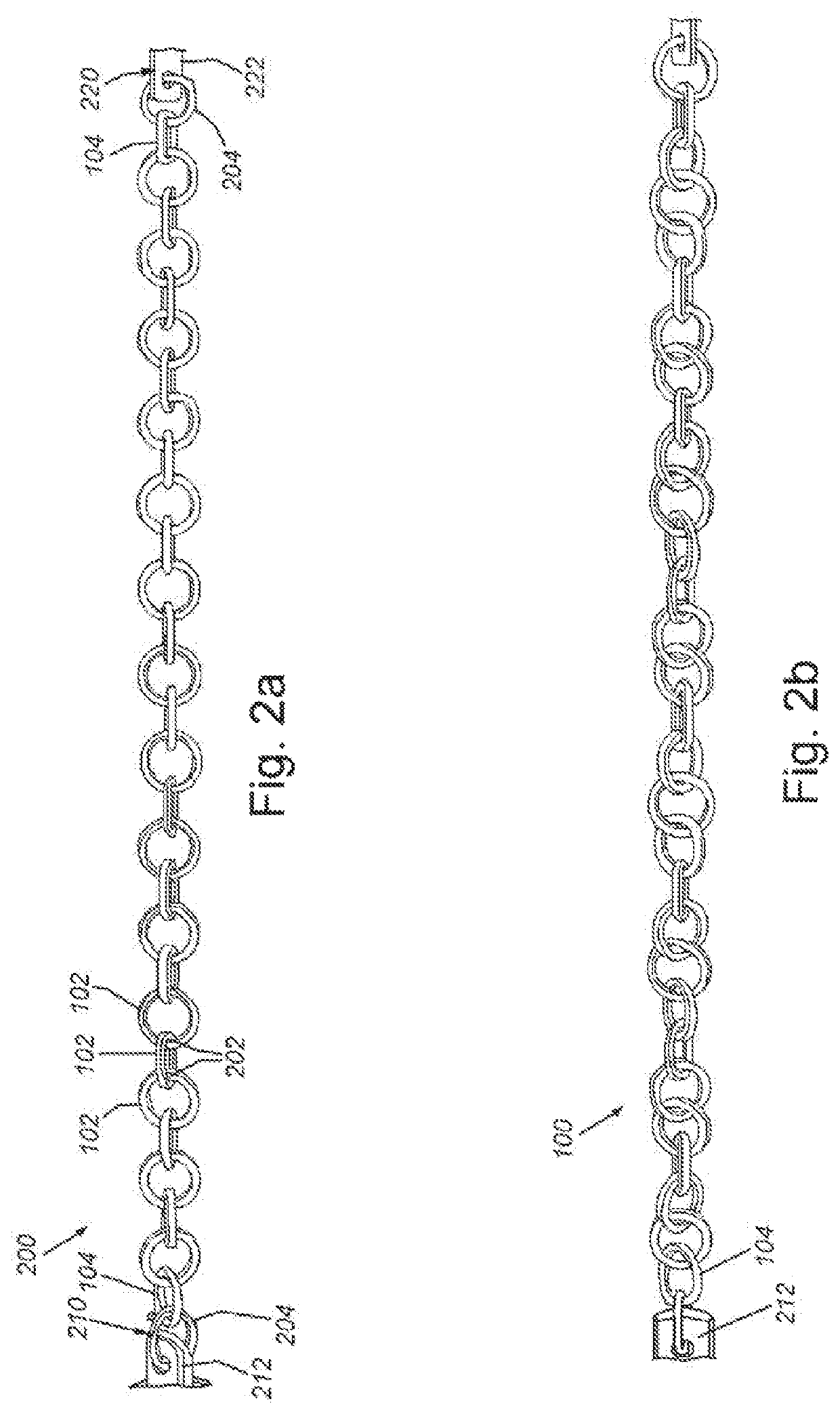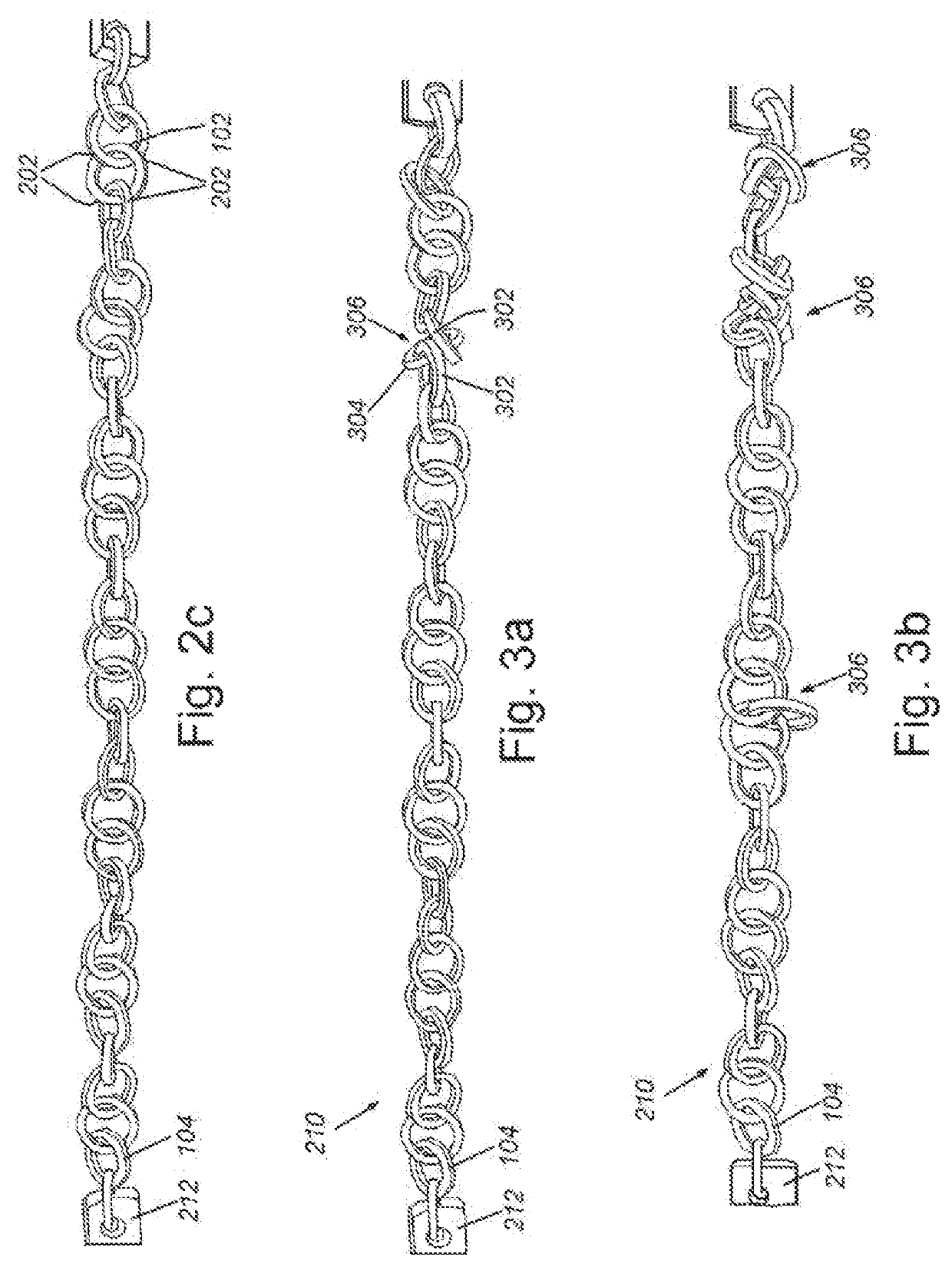System and method for conversion of rotational motion into linear actuation by mechanical stacking or unstacking of connected links
a technology of rotational motion and linear actuation, which is applied in the direction of manipulators, gripping heads, program-controlled manipulators, etc., can solve the problems of low efficiency, high cost of manufacture and manufacture of electroactive polymers, and ineffectiveness of existing electroactive polymers for most prosthetic applications, etc., to achieve the effect of low efficiency, and reducing the cost of manufactur
- Summary
- Abstract
- Description
- Claims
- Application Information
AI Technical Summary
Benefits of technology
Problems solved by technology
Method used
Image
Examples
Embodiment Construction
[0030]FIG. 1 is perspective view of a plurality of connected links in a chain for use in an exemplary Link Stacking Actuator (LSA) arrangement according to an illustrative embodiment. An LSA can include a chain 100 that can have a series of interlocking links 102, with each link being a complete loop that passes through adjacent links. The exemplary links in FIG. 1 are shown as having a disk or circular / annular perimeter shape with a rectangular cross section having rounded corners. However, other perimeter shapes and / or cross sections are specifically contemplated, including polygonal (square, rectangular, triangular, hexagonal), ovular / elliptical, and / or other cross sections or combinations. The shapes and / or cross sections can be provided variously in the same chain—for example where differing performance characteristics are desired along the length of a single chain. Likewise, the overall interior size of each link can be the same or vary within the same chain—or in different ch...
PUM
 Login to View More
Login to View More Abstract
Description
Claims
Application Information
 Login to View More
Login to View More - R&D
- Intellectual Property
- Life Sciences
- Materials
- Tech Scout
- Unparalleled Data Quality
- Higher Quality Content
- 60% Fewer Hallucinations
Browse by: Latest US Patents, China's latest patents, Technical Efficacy Thesaurus, Application Domain, Technology Topic, Popular Technical Reports.
© 2025 PatSnap. All rights reserved.Legal|Privacy policy|Modern Slavery Act Transparency Statement|Sitemap|About US| Contact US: help@patsnap.com



